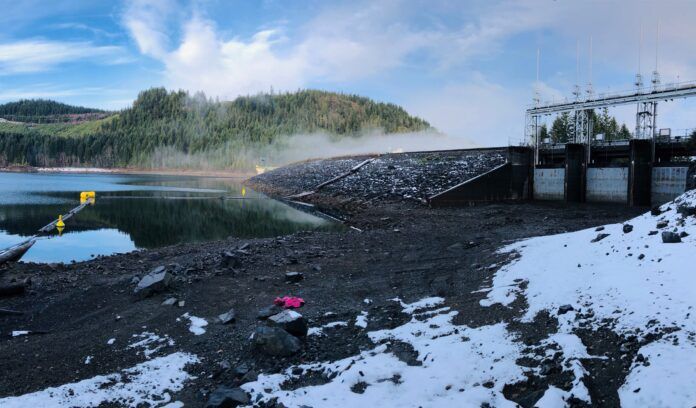Record low water levels are continuing to impact the South Coast, requiring BC Hydro to adjust its operations and protect downstream fish habitats.
Hydro says facilities in the Lower Mainland and Vancouver Island are seeing the lowest inflows. Comox experienced the lowest accumulated inflows from Oct. 1 to present than it has over the last 60 years.
They say the reason for this is dry conditions leading in to cold conditions that have been persisting longer than normal.
“The light precipitation this fall has not had a significant impact on our smaller facilities on the South Coast,” said Kevin Aquino, BC Hydro spokesperson.
“In fact, some of the inflow reduction is associated with having earlier snowpack build because of unseasonable cold temperatures in November and December, which means the precipitation falling is not refilling the reservoirs.”
Water flow levels have been reduced in the Puntledge River by about 11 per cent, and BC Hydro says the Comox Lake Reservoir is around the bottom operating range at 130.03 metres.
BC Hydro spokesperson Stephen Watson says the area, including Campbell River, has seen its lowest precipitation in the last 41 years since Sept. 23. Snowpack is only at about 50 per cent normal for this time of year.
Campbell River flow has been reduced by nine per cent, according to Watson, and there’s a similar plan for flow reduction on Friday.
BC Hydro says the last time inflows were close to these low levels was in 2006 and 2013/14 fall and winter seasons.
Despite the challenges, BC Hydro’s integrated system means they are still able to meet electricity demands in the province. They say most of B.C.’s power is generated by larger facilities in the north and southeast areas.
Hydro says there does not appear to be any rain or snowmelt in the forecast for the near future. However, they say historically rain and additional snowmelt run-off typically show up across January and February.




